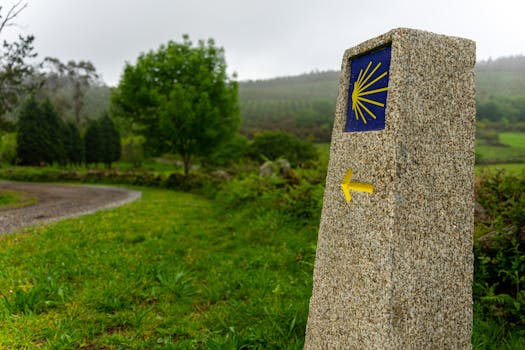Live the Unique Experience of Hiking the Camino de Santiago, Spain: A Historical and Spiritual Pilgrimage
The Camino de Santiago, or the Way of St. James, is not just a hiking trail; it is a journey steeped in history, spirituality, and personal transformation. This ancient pilgrimage leads to the shrine of the apostle Saint James the Great in Santiago de Compostela, Spain. For centuries, pilgrims from all over the world have traversed its paths, seeking not only the physical challenge but also a deeper connection to themselves and their faith. In this article, we will explore the historical significance, the spiritual journey, and practical tips for those considering this unique experience.
The Historical Significance of the Camino de Santiago
The Camino de Santiago has a rich history that dates back to the 9th century when the remains of Saint James were believed to have been discovered in Galicia. This discovery led to the establishment of Santiago de Compostela as a major pilgrimage site in medieval Europe. The route became one of the most important Christian pilgrimages, alongside Jerusalem and Rome.
Over the centuries, the Camino has evolved, with various routes emerging across Europe. Today, the most popular route is the Camino Francés, which stretches approximately 780 kilometers (about 485 miles) from Saint-Jean-Pied-de-Port in France to Santiago de Compostela. Pilgrims can also choose from other routes, such as:
- Camino Portugués: Starting in Lisbon or Porto, this route offers stunning coastal views.
- Camino del Norte: Following the northern coast of Spain, this path is known for its rugged beauty.
- Via de la Plata: A less traveled route that begins in Seville, offering a unique perspective on Spanish culture.
The Spiritual Journey of the Camino
For many, the Camino de Santiago is more than just a physical trek; it is a spiritual pilgrimage. Pilgrims often embark on this journey seeking answers to personal questions, healing from past traumas, or simply a deeper connection to their faith. The act of walking becomes a form of meditation, allowing individuals to reflect on their lives and experiences.
Throughout the journey, pilgrims encounter numerous churches, monasteries, and historical landmarks that serve as reminders of the spiritual significance of the path. Some notable sites include:
- The Cathedral of Santiago de Compostela: The final destination, housing the relics of Saint James.
- The Monastery of Santo Domingo de Silos: Known for its beautiful Romanesque architecture and tranquil atmosphere.
- The Church of San Juan de Ortega: A peaceful stop that offers a moment of reflection.
Many pilgrims also participate in traditional rituals, such as receiving the Compostela certificate upon completion of the journey, which symbolizes their spiritual accomplishment.
Preparing for the Camino: Practical Tips
Embarking on the Camino de Santiago requires careful planning and preparation. Here are some essential tips for prospective pilgrims:
- Choose Your Route: Decide which route suits your interests and physical abilities. Each path offers unique landscapes and cultural experiences.
- Train Physically: Start training several months in advance. Walking long distances regularly will help build stamina.
- Packing Wisely: Bring only essential items. A lightweight backpack, comfortable walking shoes, and weather-appropriate clothing are crucial.
- Stay Hydrated and Nourished: Carry water and snacks, and take advantage of local eateries along the way to refuel.
- Connect with Fellow Pilgrims: The Camino is known for its sense of community. Engage with others, share stories, and create lasting friendships.
Conclusion: A Journey of a Lifetime
The Camino de Santiago offers a unique blend of history, spirituality, and personal growth. Whether you are seeking a physical challenge, a spiritual awakening, or simply an escape from the hustle and bustle of modern life, this pilgrimage has something to offer everyone. With its breathtaking landscapes, rich cultural heritage, and the camaraderie of fellow pilgrims, the Camino is more than just a hike; it is a transformative experience that leaves a lasting impact on the heart and soul.
As you consider embarking on this journey, remember that the Camino is not just about reaching Santiago de Compostela; it is about the experiences, reflections, and connections made along the way. So lace up your boots, pack your backpack, and prepare to live the unique experience of hiking the Camino de Santiago.
